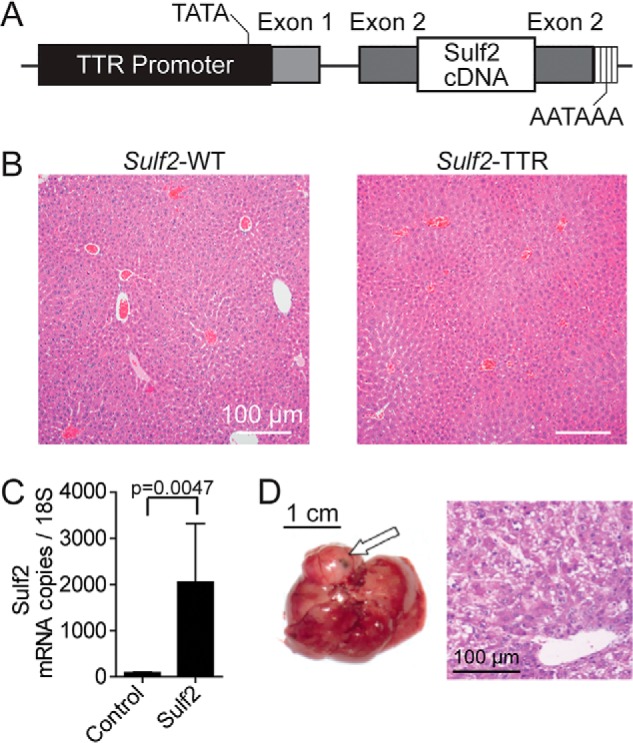Figure 1.

Genetically engineered mouse model with TTR-driven Sulf2 expression. A, schematic demonstrating design of Sulf2-overexpressing genetically engineered mouse model. Sulf2 cDNA is inserted into exon 2 of the TTR promoter, resulting in hepatocyte-specific expression. Relative locations of the TATA box and poly(A) tail are indicated. B, histopathologic analysis of liver tissue from WT (Sulf2-WT) and Sulf2-overexpressing (Sulf2-TTR) mice at 8 months of age. Normal liver morphology is demonstrated with both phenotypes. C, validation of Sulf2 overexpression in the transgenic mouse model by qPCR in control (Sulf2-WT, n = 3) and transgenic (Sulf2-TTR, n = 3) mice at 8 months of age. Results are expressed as mean ± S.E. (error bars). D, hepatic tissue (left) and corresponding histopathologic analysis (right) of spontaneous liver carcinogenesis from a single mouse (one of six) with the Sulf2-TTR genotype with no liver tumors spontaneously developing in the 10 Sulf2-WT mice. The tumor is indicated by an arrow.
